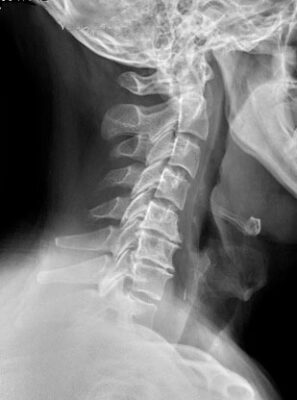What is spondylosis?
Spondylosis is a general term for age-related wear and tear affecting the spinal joints and discs in your neck. As you age the discs dehydrate and shrink causing there to be less space between the vertebrae. Signs of wear and tear in the joints may also develop which may include bone spurs.
Cervical spondylosis is very common with more than 85 percent of people over 60 affected.
Many people have no symptoms even if their X-ray shows severe signs of wear and tear. Likewise some people with few changes on X-ray can have severe symptoms. Anyone with a previous neck injury or a job that involves a lot of overhead work may be more prone to have symptoms.
Symptoms
The main symptom is usually pain and stiffness in the neck.
In severe cases it may result in a narrowing of the space for the spinal cord and the nerve roots that pass through the spine to the rest of your body. If there is any pressure or pinching of either the spinal cord or the nerve roots then you might experience more extreme symptoms which may include:
- Tingling, numbness and weakness in your arms, hands, legs or feet
- Lack of coordination and difficulty walking- Discuss this with your GP reasonably urgently
- Loss of bladder or bowel control-Seek medical attention immediately if you have this
Treatment
This will depend on how bad your symptoms are but generally the treatment will be painkillers, exercises and advice on posture.
Surgery is only considered if:
- a nerve is being pinched by a slipped disc or bone (cervical radiculopathy)
- there is a problem with your spinal cord (cervical myelopathy)
Physiotherapy from the NHS may not be available everywhere and waiting times can be long. Even when you do get there the treatment will generally be exercises which you can start to do yourself following the exercise sheets on this site.
You can also get physiotherapy privately which is a good option as you will get a prompt assessment and hands on treatment which will get the pain under control before it becomes chronic.
The physiotherapist will locate the source of the problem and mobilise any stiff joints with gentle techniques. The therapist will also correct any postural problems and make sure you are know what exercises to do and that you are doing them correctly.

